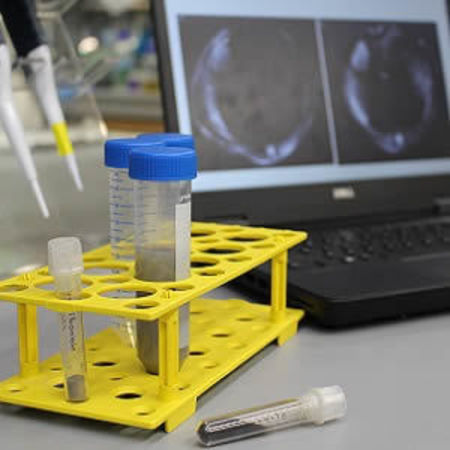A novel nondiamond-based contrast agent has been developed by a team of scientists from the National University of Singapore. The chemical "dye" can be used to enhance the visibility of internal body structures in MRI and can improve the visualisation of liver cancer tumours. This in turn can facilitate earlier detection and improved treatment strategies.
See Also: Simultaneous PET/MR Imaging - Key Benefits
MRI is commonly used for cancer diagnosis as well as to track patient progress after treatment. There are generally two modes of MRI imaging - T1-weighted and T2 weighted imaging. Contrast agents are often used to improve imaging quality but each imaging mode requires a specific class of contrast agents which cannot be used together. This can make liver cancer diagnosis more challenging, especially since T2-weighted imaging is not completely reliable and both T1 and T2-weighted imaging can be confounded by tumour vascularity.
This new contrast agent developed by the NUS research team led by Assistant Professor Edward Chow, Principal Investigator from the Cancer Science Institute of Singapore at NUS and Department of Pharmacology at NUS Yong Loo Lin of Medicine could provide clearer and more accurate images of tumours in both T1 and T2-weighted MRI scans and with lower dosages of contrast agents.
The dye was developed using nondiamonds in combination with a manganese base. Nondiamonds are carbon-based particles around two to eight nanometres in diameter and have properties that attract water molecules. This promotes proton exchange between water molecules and paramagnetic ions thus enhancing T1 and T2 relaxation and providing higher quality images.
The research team found that with this novel compound, liver tumours that could not be visualised without contrast agents became easily visible at low dosages.
“Our experiments suggest that our dual-mode contrast agent holds great promise in improving imaging for liver cancer. We are hopeful that this advancement in nanomedicine will lead to safer and more accurate diagnosis of liver cancer. Moving forward, we plan to conduct further pre-clinical safety studies for our contrast agents, with the end goal being clinical implementation. We are also looking into using our contrast agents to improve imaging for glioma and ovarian cancer,” said Asst Prof Chow.
Source: National University of Singapore
Image Credit: National University of Singapore
References:
Hou W, Toh TB, Abdullah LN, Yvonne TWZ, Lee KJ, Guenther I, Chow EK. (2017) Nanodiamond-Manganese dual mode MRI contrast agents for enhanced liver tumor detection. Nanomedicine. Apr;13(3):783-793. doi: 10.1016/j.nano.2016.12.013.
Latest Articles
liver cancer, Cancer imaging, contrast agent, chemical dye
A novel nondiamond-based contrast agent has been developed by a team of scientists from the National University of Singapore.
























